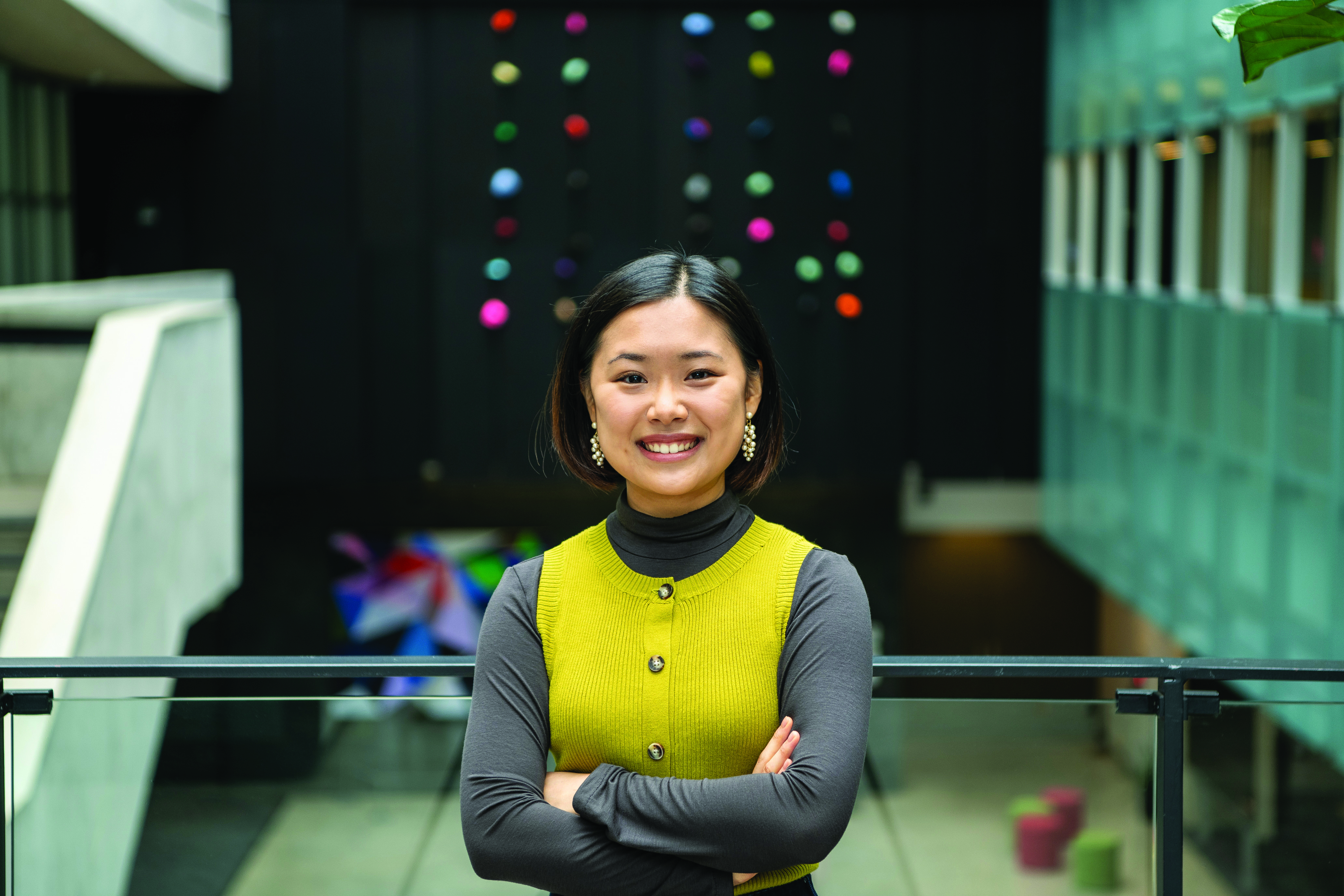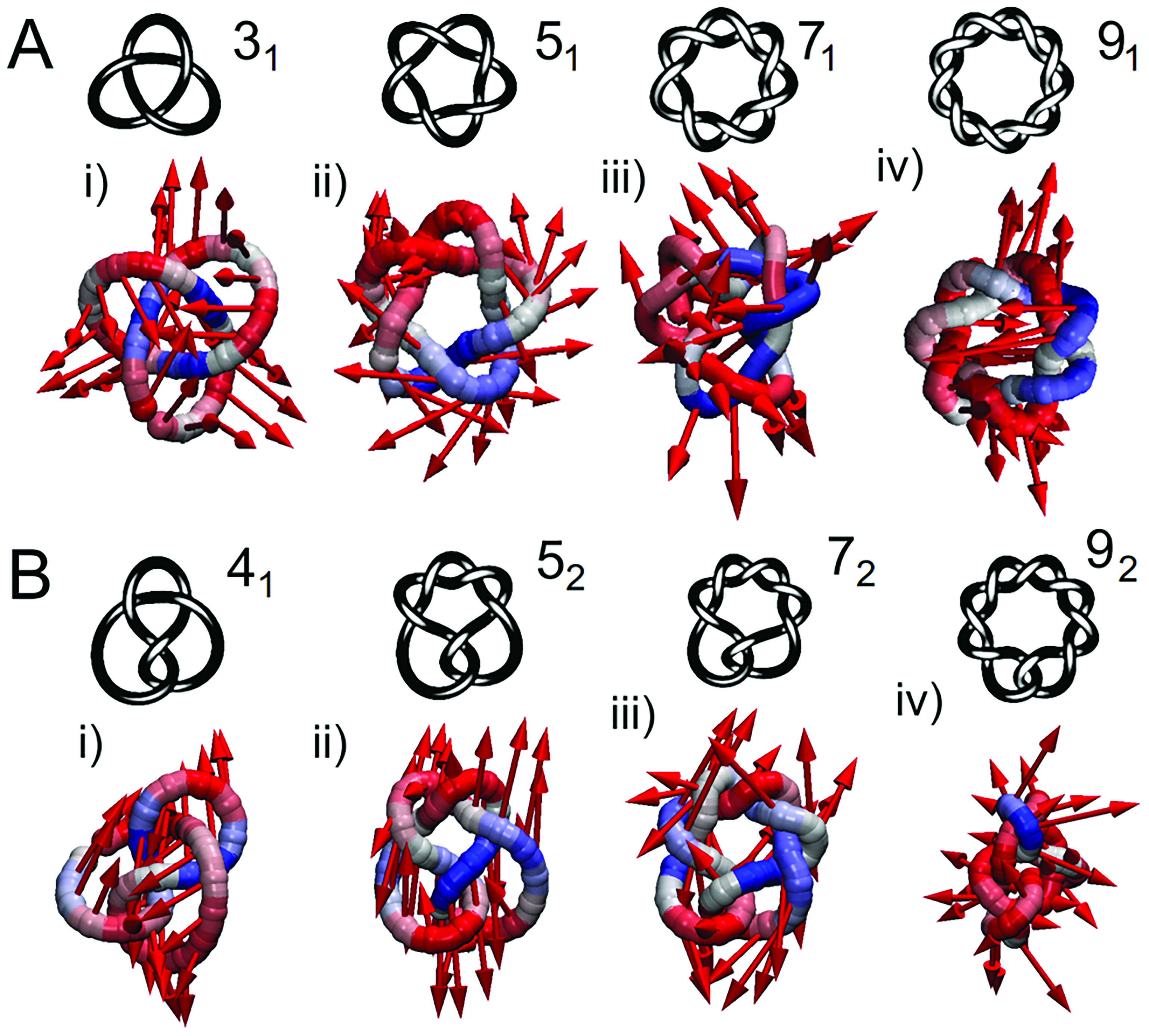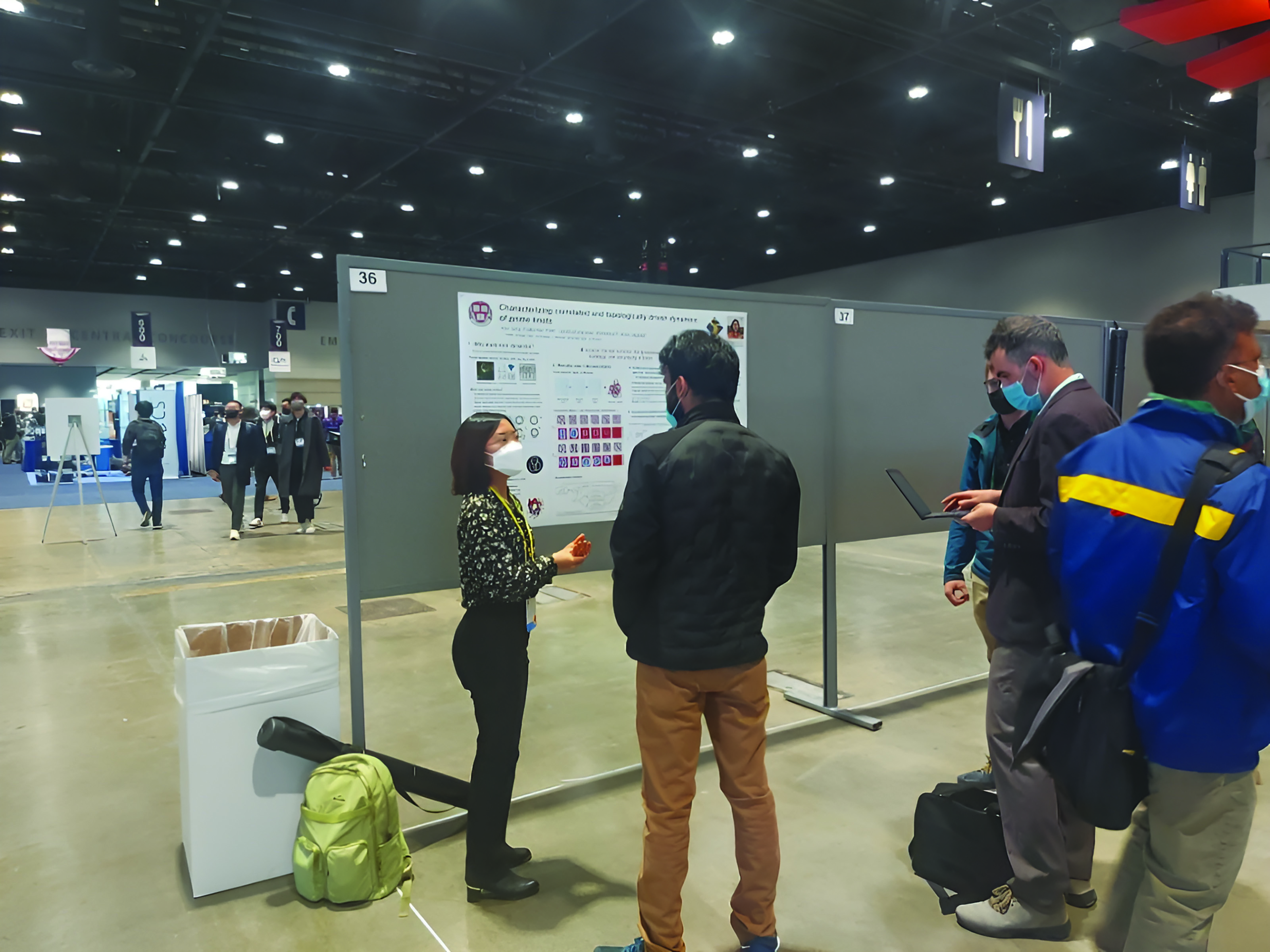An Empowering and Knotted Journey into Polymer Physics
Spring
2024
Building Blocks - Undergraduate Research and Outreach Projects
An Empowering and Knotted Journey into Polymer Physics
Hyo Jung Park, 2023 SPS Awardee for Outstanding Undergraduate Research, and Graduate Student, Perimeter Institute for Theoretical Physics
Think of beautiful objects we see in our lives. Many of them, in categories from architecture and ornaments to hairstyles, are knots.
What do knots have to do with physics and astronomy?
Knots naturally arise in many physical systems and are closely linked to the systems’ behaviors. For instance, random bursts of electromagnetic fields on the sun’s surface lead to tangled coronal loops that can be modeled by knots.1 DNA strands are often found knotted, and their knot structures can affect biological processes.2 In polymer materials (bunches of long-chain molecules), some properties of the materials, such as viscosity, are sensitive to the entanglement of polymers.3
In many systems like these, studying the knotted components helps us understand the behavior of the collective systems. This is what motivated my research—using knots made of polymer chains, I studied the motion of individual knots and how they relate to knot structures or topologies.
My research on polymer knots started during an unusual time, July 2020, when the COVID-19 pandemic had just begun. I had flown back home from my college to South Korea, disappointed because my summer program, which was to be my first formal research experience, had been canceled. I looked for other opportunities, but most summer programs had been canceled due to the pandemic or had no open positions.
With the thinnest straw of hope, I reached out to professors and researchers at universities, inquiring about opportunities. After what felt like an eternity, I heard back from Anna Lappala, a theoretical polymer physicist at Harvard University. I couldn’t believe that I got a reply and could do physics research during that turbulent time! Despite my concerns about conducting entirely remote research and studying a subject that was completely new to me, the project gradually gained momentum and developed into a full research project that would continue through the next two years.
My first task was to construct different kinds of knots and make them move. We weren’t in a lab, so building knots meant a lot of theory work and computer coding. See Fig. 1 for some of the knots I created.
To study how the knots moved, we used molecular dynamics simulations. They're efficient in predicting the complex motions of atoms and large molecules like our polymer knots. In the simulations, the knots’ movements were powered by Brownian motion and springlike harmonic interactions between particles in the knots. Due to these “internal” forces, knots could move on their own without any external pushes acting on them. (In Fig. 1, arrows show the dominant motions of the knot particles.)
The knots jiggled and twisted continuously, and I analyzed how each knot topology moved. In comparing the motion of different knots, I found interesting results: The dynamics of a knot largely depended on its structure, and knots within the same topology class showed similar types of dynamics. What’s more, depending on their topologies, some knots repeated their motions over time, which I termed having “quasiperiodicity.”
Dr. Lappala and I were excited since these results may help scientists better understand polymer systems like glass, which often contain many knotted parts.4 Our work may also enable scientists to control individual knot molecules, which could be applied to biomedical engineering and nanotechnology research that uses knots as “machines” to achieve certain tasks.5
Working on this project for two years has left me with invaluable experience and lessons. I participated in the entire research process, from project building to paper writing6 and presenting. Attending a physics conference had always seemed like a faraway dream, but now I have attended multiple and presented a poster at one. Bringing my work out into the world was scary, but discussing my research with other physicists was incredibly rewarding and empowering.
I loved this process so much that I decided to pursue a PhD in physics after graduating from Smith College and, ultimately, a research career. I had often worried whether I would make a good researcher, but this experience taught me to focus on what I can do and to believe in myself. Now, when that self-doubt creeps in, I remind myself not to underestimate my abilities and that hard work will eventually pay off.
My experience was more meaningful thanks to the guidance of my research mentor, Dr. Lappala. She gave me incredible support and encouraged me to leave my comfort zone and explore my interests. Her inspiration kept me on track as I conducted fully remote research through the challenging times of the pandemic.
My journey in physics research was empowering. And now, if anyone asks me how to get knotted with physics, I know how to answer: Thread yourself into physics research!
References
- R. L. Ricca, “Knots and Braids on the Sun,” in Science and Art Symposium, eds. A. Gyr, P. D. Koumoutsakos, and U. Burr (Dordrecht: Springer, 2000), doi.org/10.1007/978-94-011-4177-2_32.
- D. Marenduzzo, C. Micheletti, E. Orlandini, and D. W. Sumners, “Topological Friction Strongly Affects Viral DNA Ejection,” Proc. Natl. Acad. Sci. U.S.A. 110, no. 50 (2013): 20081, doi.org/10.1073/pnas.1306601110.
- F. Vargas-Lara, A. M. Hassan, M. L. Mansfield, and J. F. Douglas, “Knot Energy, Complexity, and Mobility of Knotted Polymers,” Sci. Rep. 7, no. 1 (2017): 13374, doi.org/10.1038/s41598-017-12461-w.
- F. Vargas-Lara, B. A. Pazmiño Betancourt, and J. F. Douglas, “Influence of Knot Complexity on Glass-Formation in Low Molecular Mass Ring Polymer Melts,” J. Chem. Phys. 150, no. 10 (2019): 101103, doi.org/10.1063/1.5085425.
- F. Schaufelberger, “Open Questions in Functional Molecular Topology,” Commun. Chem. 3 (2020): 182, doi.org/10.1038/s42004-020-00433-7.
- H. J. Park and A. Lappala, “Cooperative Motions and Topology-Driven Dynamical Arrest in Prime Knots,” arXiv:2211.01605, doi.org/10.48550/arXiv.2211.01605.
SPS Award for Outstanding Undergraduate Research
Outstanding Undergraduate Research Awards recognize individuals for exceptional physics or astronomy research conducted as an undergraduate. Winners receive $1,800 in travel funding to present their research at an AIP Member Society meeting, $500 for themselves, and $500 for their SPS chapter. Applications are due March 15 each year. Learn more at spsnational.org/awards/outstanding-undergraduate-research.
More from this department
Building Blocks - Undergraduate Research and Outreach Projects



